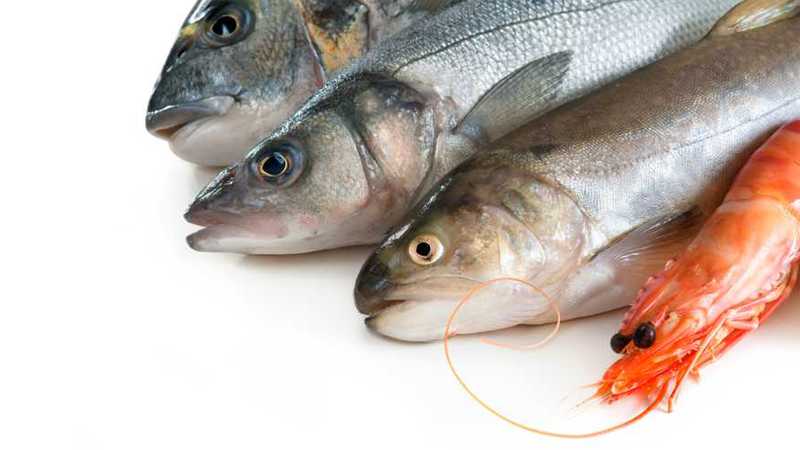42 food labels and allergies
Food Allergies | Causes, Symptoms & Treatment | ACAAI Public … Carefully check ingredient labels of food products, and learn whether what you need to avoid is known by other names. The Food Allergy Labeling and Consumer Protection Act of 2004 (FALCPA) mandates that manufacturers of packaged foods produced in the United States identify, in simple, clear language, the presence of any of the eight most common food … Food Allergies: What You Need to Know | FDA FALCPA requires that food labels clearly identify the food source names of any ingredients that are one of the eight major food allergens or contain protein derived from a major food allergen....
Food Allergies | Healthy Schools | CDC Español (Spanish) Food allergies are a growing food safety and public health concern that affect an estimated 8% of children in the United States. 1 That’s 1 in 13 children, or about 2 students per classroom. A food allergy occurs when the body has a specific and reproducible immune response to certain foods. 2 The body’s immune response can be severe and life threatening, …

Food labels and allergies
Identifying food allergies with food labels - MSU Extension Michigan State University Extension encourages everyone to become avid label readers. Food labels list the top eight offending proteins, which account for 90 percent of all food allergic reactions. Unfortunately, labels cannot include every possible allergen. The top eight foods or food groups that cause allergic reactions are: Milk/dairy. Eggs. Food allergies and food intolerances - Food Standards Food allergies . A food allergy occurs when a person's immune system reacts to allergens that are harmless to other people. Most food allergies are caused by peanuts, tree nuts, milk, eggs, sesame seeds, fish and shellfish, soy, lupin and wheat. These must be declared whenever they are present in food as ingredients (or as components of food additives or processing aids), … Allergen declarations, warnings, and advisory statements on food labels ... If your food or drink contains a common allergen or ingredient sourced from it, you must state this clearly on your label. The allergens that must be declared are: peanuts almonds Brazil nuts cashews hazelnuts macadamias pecans pine nuts pistachios walnuts crustacea molluscs fish milk egg
Food labels and allergies. Food Labeling - Food Allergy Research & Education Food labels need to be accurate and truthful to help people with food allergies stay safe. Issues can arise when companies change the way they manufacture a food—or when they occasionally make mistakes. As of 2016, the U.S. Food and Drug Administration (FDA) has the authority to initiate allergen-related recalls. PDF Decoding Food Labels: Handouts for People with Food Allergies Decoding Food Labels: Handouts for People with Food Allergies 8 Shellfish Shellfish tends to be a more potent allergen among adults. Shellfish include mollusks (e.g. squid, octopus, clams, and scallop) and crustaceans (e.g. crab, lobster, crawfish, and shrimp). Shellfish may be listed in seafood category of foods. Food Allergen Labeling Law Requirements and Exceptions - Verywell Health In addition, manufacturers must use use the "common or usual name" of the allergen. For example, "egg" must be called "egg" on food labels instead of "ovalbumin.". The warning must be listed in the same size type as the rest of the ingredients on the label. The common name must appear either: In parentheses after the ingredient name. How To Read Food Labels For Allergens - Allergy Force FARE on how to read food labels. Kids with Food Allergies on choosing safe foods. AAAAI on food labels . The Food Allergen Labeling and Consumer Protection Act of 2004 and additional FDA information on food allergies. The FASTER Act of 2021 details for the food industry.
How to Read a Food Label - Food Allergy Research & Education Starting Jan. 1, 2023, allergen labeling of sesame will be required under the Food Allergy Safety, Treatment, Education and Research (FASTER) Act of 2021. Ingredients and manufacturing processes can change without warning. Make a habit of carefully reading labels to ensure you avoid any potential allergens. "May Contain" Statements Allergen labelling for food manufacturers - Food Standards Agency If your product contains any of the main 14 allergens as an ingredient or processing aid, it must be included on the label. The 14 main allergens are: celery cereals containing gluten - including... Understanding Food Dye Allergies - Healthline Oct 25, 2019 · Food dye allergies are pretty rare. Overall, experts believe that only a small number of people are affected by food dyes. Food additives can be naturally occurring or made in a laboratory. Food allergy - Wikipedia Although sensitivity levels vary by country, the most common food allergies are allergies to milk, eggs, peanuts, tree nuts, fish, shellfish, soy, and wheat. These are often referred to as "the big eight". Allergies to seeds—especially sesame—seem to be increasing in many countries. An example of an allergy more common to a particular region is that to rice in East Asia where it …
Food Allergies (for Kids) - Nemours KidsHealth How Are Food Allergies Treated? There is no special medicine for food allergies. Some can be outgrown; others will last a kid's whole life. The best treatment is to avoid the food itself and any foods or drinks that contain the food. One way to figure that out is to read food labels. Any foods that might cause an allergic reaction will be ... How to Read an Ingredients Label for Food Allergies - Verywell Health The Food Allergy Labeling and Consumer Protection Act (FALCPA) became effective in 2006 and requires the top 8 food allergens ( milk, soy, egg, wheat, peanut, tree nut, fish, and shellfish) be highlighted separately on the ingredients label in plain, easy-to-understand language. These top 8 allergens account for the majority (90%) of food ... Food Allergy & Anaphylaxis | Food Labeling | Food Labels Food Labels When it comes to food allergies, strict avoidance of the food is the only way to prevent an allergic reaction. To ensure foods are safe for your needs, reading food labels is a requirement. No Label, Do Not Eat! It is important that children learn from an early age that they must read labels. Food Allergies | FDA Apr 18, 2022 · People with food allergies should read labels and avoid the foods they are allergic to. The law requires that food labels identify the food source of all major food allergens used to make the food ...
How to Read a Food Label - SPOKIN Step 1: Understand how and where to find allergen information on a label. If your allergen is a Top 8: The Food Allergen Labeling, Consumer Protection Act, requires by law, that packaged foods list an allergen in plain english if it is an ingredient. This only is required if the allergen is one of the top 8 which include peanut, tree nut, milk ...
Wheat and Gluten Ingredients on Food Labels - WebMD Any packaged food has to show on the label if it contains any of the eight major food allergens in it: milk, eggs, fish, shellfish, tree nuts, peanuts, wheat, or soybeans. Look at both the food...
Food allergy - Symptoms and causes - Mayo Clinic The most common food allergy signs and symptoms include: Tingling or itching in the mouth. Hives, itching or eczema. Swelling of the lips, face, tongue and throat or other parts of the body. Wheezing, nasal congestion or trouble breathing. Abdominal pain, diarrhea, nausea or vomiting.
The Importance of Reading Labels for Food Allergen Avoidance Reading labels can be tricky and ingredient lists can change suddenly without warning. It is recommended that people with food allergies read all labels prior to eating products, including those they have safely eaten before. This becomes particularly important during trick-or-treating and other holiday gatherings where many potentially unsafe ...
What You Must Know About Food Labels & Allergens | Allergy Force The Food Allergen Labeling and Consumer Protection Act (FALCPA) of 2004 amended the Food, Drug and Cosmetics Act that regulates food safety in the United States. FALCPA (effective January 1, 2006) is a U.S. law that requires all food labels in the U.S. to list ingredients that may cause allergic reactions.
Advisory food labels: consumers with allergies need more than "traces ... Immunoglobulin E mediated food allergy is increasing, affecting up to 2% of adults and 8% of children in the United Kingdom.1 The mainstay of management remains avoiding the implicated allergen, which requires accurate labelling on packaged foods. A bewildering array of warning labels can be found on food products (box), leaving consumers confused and anxious.
Food Labels and Nut Allergies | Peanut Allergy Mom All packaged foods regulated by the Food and Drug Administration (FDA) must include labels that identify the source names of all major allergens used to make that item. However, one example that is not required is listing highly refined peanut oil on food packaging. It is often times not listed as a major allergen on a food label.
Allergen labelling - Food Standards Some foods and food ingredients or their components can cause severe allergic reactions including anaphylaxis, which is why declaring allergens is important. These are the most common foods that can cause allergic reactions in Australia and New Zealand: peanuts tree nuts milk eggs sesame seeds fish shellfish soy lupin wheat.




Post a Comment for "42 food labels and allergies"